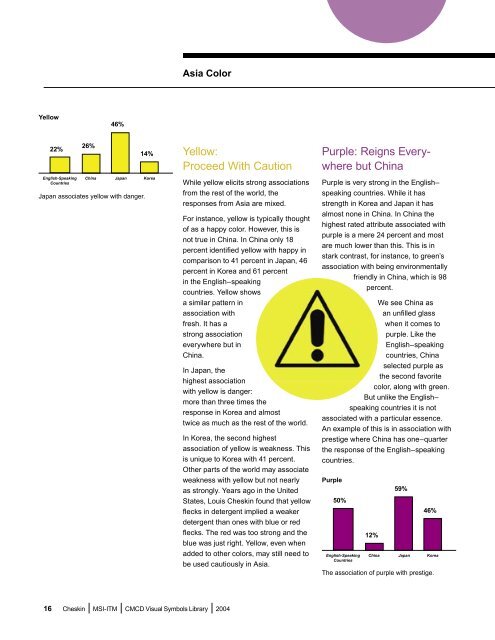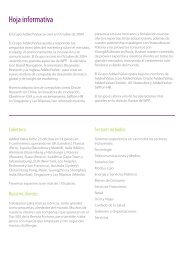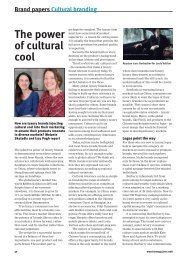global market bias: part 1- color - Added Value
global market bias: part 1- color - Added Value
global market bias: part 1- color - Added Value
You also want an ePaper? Increase the reach of your titles
YUMPU automatically turns print PDFs into web optimized ePapers that Google loves.
Yellow<br />
22%<br />
English-Speaking<br />
Countries<br />
26%<br />
46%<br />
China Japan Korea<br />
Japan associates yellow with danger.<br />
14%<br />
Asia Color<br />
16 Cheskin | MSI-ITM | CMCD Visual Symbols Library | 2004<br />
Yellow:<br />
Proceed With Caution<br />
While yellow elicits strong associations<br />
from the rest of the world, the<br />
responses from Asia are mixed.<br />
For instance, yellow is typically thought<br />
of as a happy <strong>color</strong>. However, this is<br />
not true in China. In China only 18<br />
percent identified yellow with happy in<br />
comparison to 41 percent in Japan, 46<br />
percent in Korea and 61 percent<br />
in the English–speaking<br />
countries. Yellow shows<br />
a similar pattern in<br />
association with<br />
fresh. It has a<br />
strong association<br />
everywhere but in<br />
China.<br />
In Japan, the<br />
highest association<br />
with yellow is danger:<br />
more than three times the<br />
response in Korea and almost<br />
twice as much as the rest of the world.<br />
In Korea, the second highest<br />
association of yellow is weakness. This<br />
is unique to Korea with 41 percent.<br />
Other <strong>part</strong>s of the world may associate<br />
weakness with yellow but not nearly<br />
as strongly. Years ago in the United<br />
States, Louis Cheskin found that yellow<br />
flecks in detergent implied a weaker<br />
detergent than ones with blue or red<br />
flecks. The red was too strong and the<br />
blue was just right. Yellow, even when<br />
added to other <strong>color</strong>s, may still need to<br />
be used cautiously in Asia.<br />
Purple: Reigns Everywhere<br />
but China<br />
Purple is very strong in the English–<br />
speaking countries. While it has<br />
strength in Korea and Japan it has<br />
almost none in China. In China the<br />
highest rated attribute associated with<br />
purple is a mere 24 percent and most<br />
are much lower than this. This is in<br />
stark contrast, for instance, to green’s<br />
association with being environmentally<br />
friendly in China, which is 98<br />
percent.<br />
We see China as<br />
an unfilled glass<br />
when it comes to<br />
purple. Like the<br />
English–speaking<br />
countries, China<br />
selected purple as<br />
the second favorite<br />
<strong>color</strong>, along with green.<br />
But unlike the English–<br />
speaking countries it is not<br />
associated with a <strong>part</strong>icular essence.<br />
An example of this is in association with<br />
prestige where China has one–quarter<br />
the response of the English–speaking<br />
countries.<br />
Purple<br />
50%<br />
English-Speaking<br />
Countries<br />
12%<br />
59%<br />
46%<br />
China Japan Korea<br />
The association of purple with prestige.





